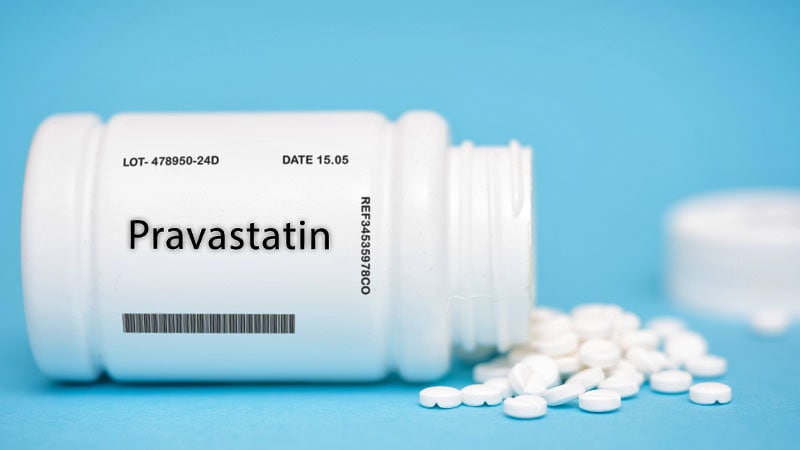[ad_1]
Most pregnant patients who are taking statins should discontinue them during pregnancy, according to both the European Society of Cardiology and the US Food and Drug Administration (FDA).
However, recent data suggest that statins may play a role in cholesterol management for a small group of very high–risk pregnant patients at increased risk for cardiovascular events, such as those with familial hypercholesterolemia or those with a recent heart attack or stroke, said Emily Schwabe, PharmD, BCPS, in a presentation at a cardio-obstetrics meeting sponsored by the American College of Cardiology.
No significant differences in teratogenic effects appeared in pregnant women exposed to statins vs controls in a 2015 Medicaid cohort study including approximately 88,700 women, Schwabe said in her presentation. She also cited a 2016 systematic review of 16 studies that showed no clear relationship between congenital abnormalities and statin use in pregnancy. A retrospective study from 2017 of pregnant women exposed to statins vs controls showed no significant difference in miscarriage rates (25% vs 21%; adjusted hazard ratio, 1.64), she added.
Clinicians may consider statin therapy for pregnant patients with very high risk for atherosclerotic cardiovascular disease after a patient-clinician discussion of the risks and benefits, she said.
If the decision is made to add or continue a statin for a very high–risk patient, consider discontinuing or delaying statin therapy until after the first trimester, if possible, Schwabe advised. In addition, “consider switching the patient to pravastatin, which is hydrophilic and a substrate for placental efflux proteins; these drug properties may limit the drug’s transfer across the placenta compared to other lipophilic statins,” she said.
Pravastatin for Preeclampsia
Additional research recently has been conducted using pravastatin during pregnancy to prevent preeclampsia, said Schwabe.
A 2021 multicenter, double-blind study published in Circulation showed no significant difference in preeclampsia rates among high-risk pregnant women randomized to 20 mg/d of pravastatin or a placebo, Schwabe said.
However, a 2024 open-label study known as INOVASIA (Indonesia Pravastatin to Prevent Preeclampsia Study) showed an advantage with pravastatin. The study included 80 patients at increased risk for preeclampsia. Patients were enrolled between 14 weeks and 20 weeks’ gestation and randomized to 20 mg of pravastatin twice daily or 80 mg of aspirin per day plus 1 g calcium per day.
Patients in the pravastatin group had a significantly lower rate of iatrogenic preterm delivery than those in the control group (P = .048), and neonates in the pravastatin group had significantly higher birth weights, lower neonatal intensive care unit admission rates, and lower rates of Apgar scores
This study showed the potential for neonatal safety and preeclampsia prevention, but the data are preliminary and more research is needed, Schwabe noted.
Current research on statins in pregnancy is limited by conflicting findings, small sample sizes, and heterogenous study populations and methodology, Schwabe told Medscape Medical News. “Large-scale randomized controlled trials with long-term follow-up are needed to evaluate the safety and efficacy of statins in patients with varying risk for preeclampsia to determine if certain groups may benefit more from statin therapy than others,” she said. Studies also are needed to identify the safest statins and optimal dosing regimens for preeclampsia prevention, said Schwabe.
“Society guidelines do not recommend statins for preeclampsia prevention at this time as more research is needed,” Schwabe noted. Clinicians may consider initiating low-dose aspirin (81 mg/d) for preeclampsia prevention as recommended by the American College of Obstetricians and Gynecologists and the Society for Maternal–Fetal Medicine.
Challenges and Considerations
Cholesterol management in pregnancy is particularly important in those with a prior cardiac event and those with conditions that predispose them to premature heart disease, said Deirdre J. Mattina, MD, medical director of Cardio-Obstetrics at Hillcrest Hospital, Beachwood, Ohio, in an interview. “LDL cholesterol will rise in pregnancy and with breastfeeding, so it is prudent to keep baseline numbers controlled with a balanced diet and/or medical therapy, when necessary,” said Mattina, who served as co-director of the meeting.
Despite the FDA’s 2021 removal of a black box warning about teratogenicity associated with statin use in pregnancy, many clinicians are not comfortable prescribing them, Mattina said.
Most practitioners in cardio-obstetrics feel comfortable starting and/or continuing hydrophilic statins in low to moderate doses during pregnancy and breastfeeding, said Mattina. “Understandably, however, many mothers are still concerned about taking any prescription drug in pregnancy, so it requires a patient-centered discussion about risks and benefits that can be tailored to their beliefs/concerns and balanced by their medical necessity,” she said.
Cholestyramine can be used as an additive therapy throughout pregnancy, she said. However, patients on proprotein convertase subtilisin/kexin type 9 inhibitors should stop taking them while considering pregnancy and resume when they stop breastfeeding, Mattina said.
Looking ahead, “There are emerging signals of benefit for prevention of preeclampsia with hydrophilic statins, so we may see more widespread uptake of statin therapy in pregnancy if this is added to aspirin therapy for preeclampsia prophylaxis in the future,” Mattina noted.
Schwabe had no financial conflicts to disclose. Mattina had no financial conflicts to disclose.
Heidi Splete is a medical journalist based in Washington, DC.
[ad_2]
Source link : https://www.medscape.com/viewarticle/dont-discount-statins-very-high-risk-pregnancies-2025a10003hw?src=rss
Author :
Publish date : 2025-02-11 09:50:45
Copyright for syndicated content belongs to the linked Source.
